As Austin cyclists navigate traffic dangers, how's the city making lanes, intersections safer?
Lauri Aylaian crawled across the blood-stained pavement of East Stassney Lane in Southeast Austin, struggling to reach her friend on the ground clinging to life 15 feet away.
Aylaian, who was halfway through a cross-country bicycle trip from California to Florida with 74-year-old international cyclist Keith Culver on March 30, said she never saw the in the hit-and-run driver coming that Wednesday morning.
"I didn't know there was anything amiss until I heard a sound that has me in therapy today," Aylaian said amid tears, explaining the relief she felt once she reached Culver, repeating over and over how much she loved him as she held tightly to his leg.
Culver is one of more than 50 cyclists hit by vehicles this year in Austin, and his death was the first traffic fatality reported among cyclists in 2022, according to Austin police. Aylaian, who suffered a broken left leg and road rash, is one of more than a dozen cyclists who have been seriously injured in 2022, according to authorities.
More: City offers online map to help improve pedestrian, bicycle network
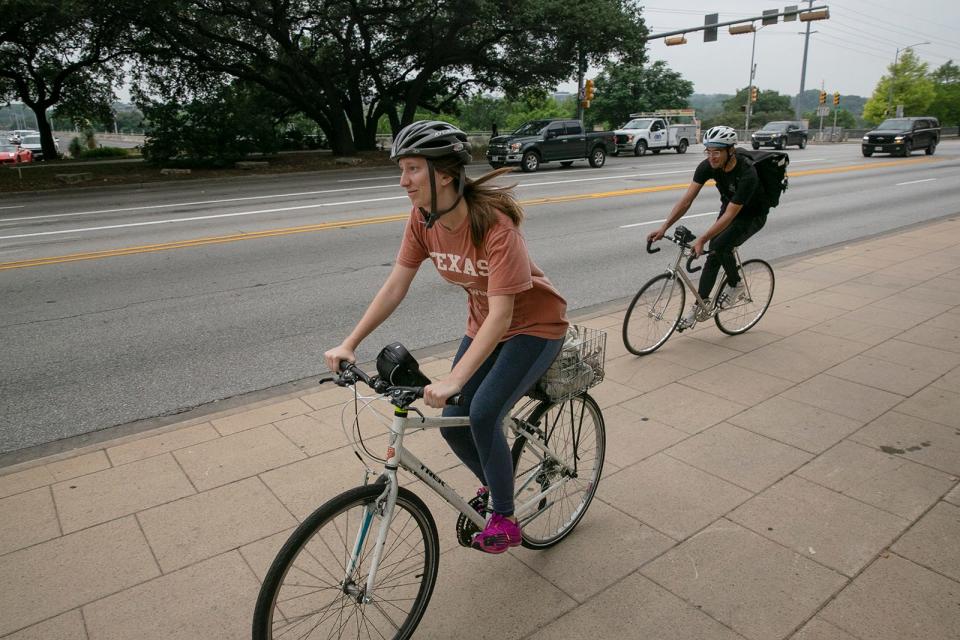
As Austin-area leaders continue to encourage residents to rely more on bicycles as their primary form of transportation to help reduce pollution and traffic, nonprofit advocates and avid cyclists say the $23.3 million invested in bicycle infrastructure since 2016 has had a huge effect. However, many believe much still needs to be done before the rest of the public will feel safe enough to opt for bike pedals instead of the gas pedal.
Speed plays major role in cycling injuries
The dangers cyclists face in Austin aren't from the way they ride their bicycles, according to Jay Blazek Crossley, a board member for the newly formed nonprofit Safe Streets Austin. It's the way people drive their cars, he said.
But drivers aren't wholly to blame, Crossley said. In the early days, Austin roads were designed to encourage people to drive fast, and as the city shifted from its small-town roots to a booming tech hub, more vehicles at higher speeds meant more crashes with a greater risk of serious injury or death.
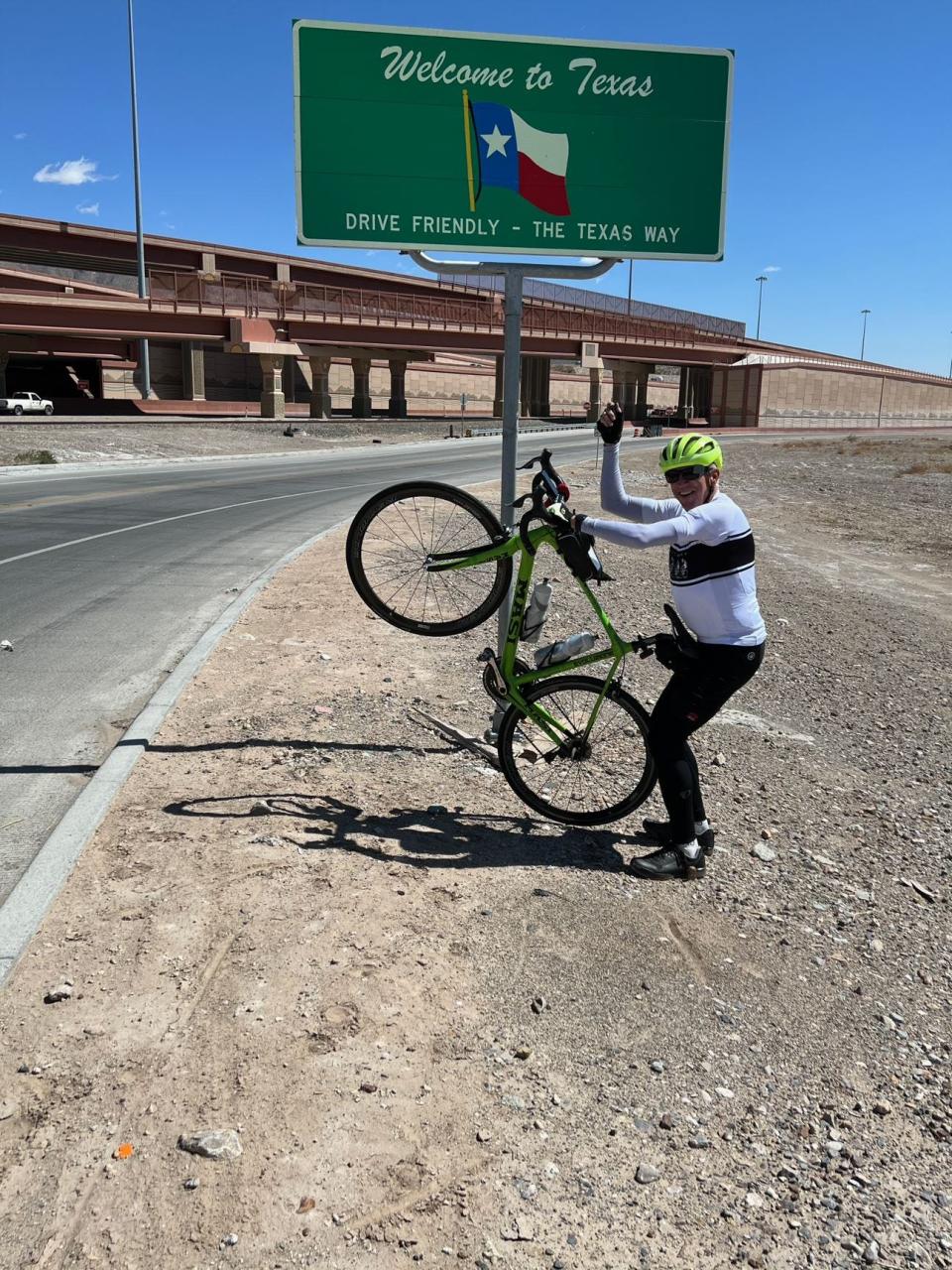
This is especially true when those hit are cyclists or pedestrians, Crossley explained.
"When engineers design a road, they choose a design speed," he said, explaining that making roads wider and placing buildings farther away from them encourage faster speeds. "Texas, along with most of America, has made the mistake of using a higher design speed of about 60 miles an hour. We need to fix the car system so it's not so dangerous."
In the past two years, Austin has faced a historic climb in traffic-related deaths as a whole.
More: April deadliest month this year in Austin traffic; 40% of 2022 deaths are pedestrians
Austin recorded 94 deaths in 2020 — the highest toll since 2015, when the city tallied 102. Those deaths often involved distracted drivers or speeders taking advantage of the empty roads because of stay-at-home orders during the coronavirus pandemic, according to Austin police.
In 2021, as vaccines allowed more commuters to return to workplaces, more drivers returned to the roads and deaths continued to rise. The 120 traffic deaths last year were an all-time high, going back to 1985, the earliest date for such police records.
As of Friday, Austin police this year had reported at least 49 traffic deaths, on par with the number reported during the same months in 2021. Also, 212 others have been seriously injured, according to the city's Vision Zero crash data.
Since the start of 2020, the first year of the pandemic, 62 cyclists have been seriously injured, compared with 153 pedestrians and 780 vehicle drivers. Eight cyclists have died of injuries they received after getting hit by a vehicle, according to the crash data.
"One death is too high," said Laura Dierenfield, who is helping lead Austin's Vision Zero Plan. "We are a Vision Zero city. Our goal is to reduce to zero fatal crashes and serious injuries. It's not acceptable, and it's something we work at every day to try and create a safer and more comfortable network for everyone."
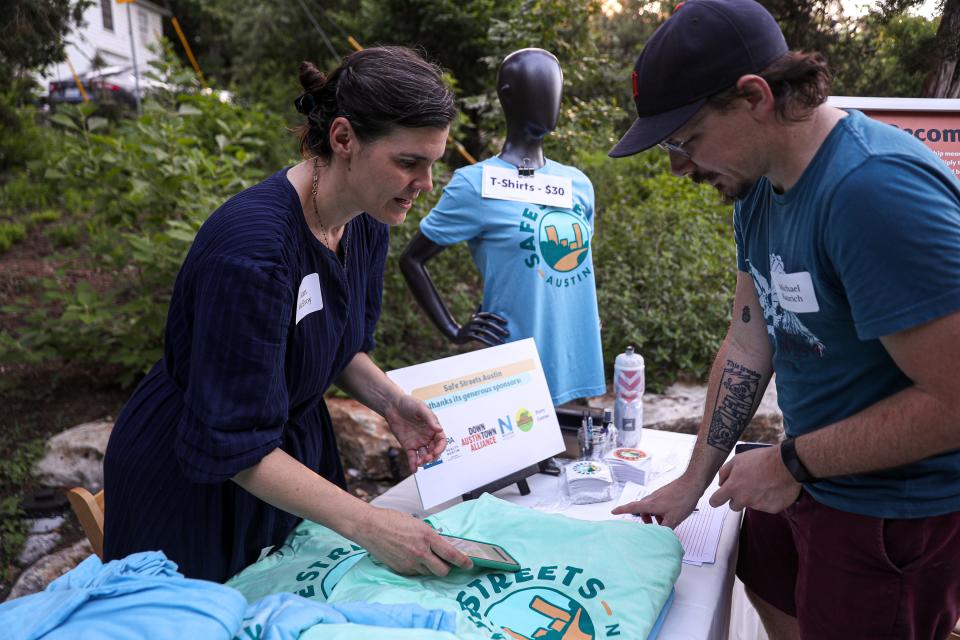
Despite cyclists making up the smallest number of serious injuries and deaths on Austin's roads, the city in 2014 homed in on creating a safer network for them. The hope was that if residents felt more comfortable pedaling in Austin, they would bike to work, to the grocery store, to restaurants or to shops near downtown. The city's roads would be safer with fewer vehicles on them, according to Dierenfield.
The Austin Transportation Department, along with several public and private partners, has completed half of its goal of building a more than 400-mile connected bicycle network throughout the city. The network is designed to cater to all ages and riding abilities, with a focus on promoting more bicycle riding and reducing fatal crashes to zero.
More: Inflation, tunnel issues blamed for Project Connect's estimated cost jump by $4.5 billion
Since the first bond referendum was approved in 2016, the city has spent at least $12.8 million on bikeways and $10.5 million on urban trails. However, that money does not include improvements made through the $482 million Corridor Mobility Program, which is likely to invest at least $32.3 million in bicycle infrastructure upgrades in current design plans.
From 2014, when the project was first adopted, through 2021, bicycle-involved crashes have mostly decreased in the city, especially in the past two years. In 2014 there were 260 bicycle crashes, in 2019 there were 242, in 2020 they dropped to 180, and in 2021 there were 141. In 2019, according to the most recent census data available, about 6,000 people were using bikes as their main form of transportation to get to work in Austin.
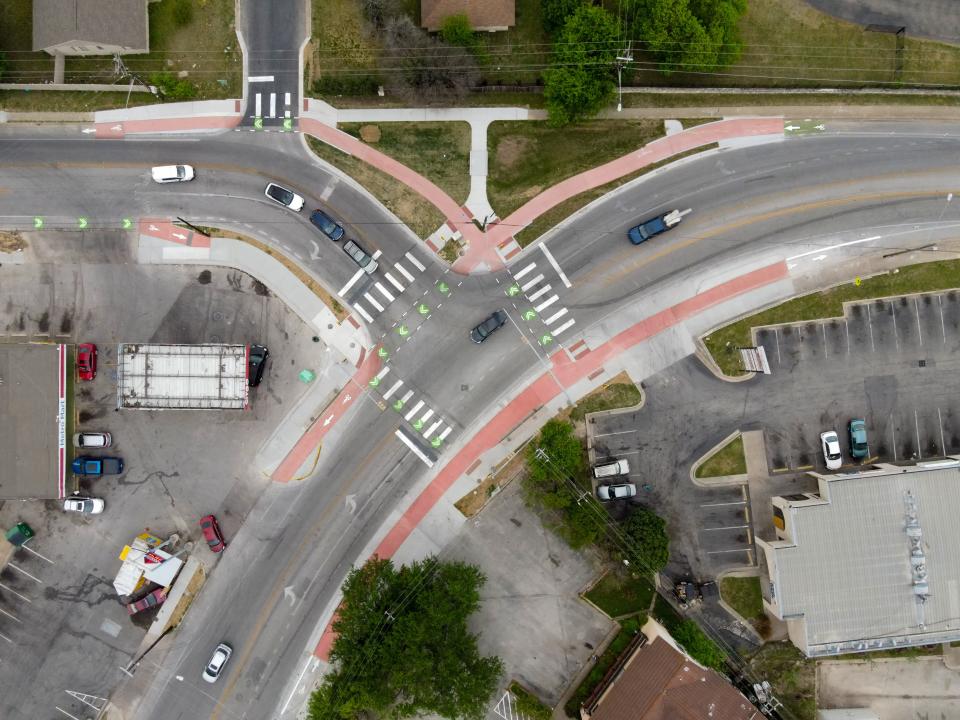
Completed bike safety improvements
Dierenfield said the city is doing all it can to improve roadway infrastructure for cyclists and pedestrians, but it's not just on Austin's Transportation Department to do so.
Texas Department of Transportation roads make up about 14.4% of the lane miles in Austin, but they account for 17.6% of bike-involved crashes, according to the city's Transportation Department. TxDOT has highways, frontage roads and some sections of arterial streets such as Lamar Boulevard and Congress Avenue.
More than half of the bicycle deaths since 2017 and 25.1% of serious injuries were on TxDOT roads, according to the city's data. Speed is the top contributing factor for traffic crashes and serious injuries, and drivers travel faster on TxDOT lanes, the city said.
TxDOT said in a statement to the American-Statesman that it has its own improvement effort, the I-35 Capital Express Central project, which is creating better bicycle and pedestrian accommodations along and across Interstate 35.
Examples of already completed projects are the reconstruction of I-35 from Stassney Lane to William Cannon Drive and at I-35 and Oltorf Street, where more bicycle and pedestrian pathways were installed. The Stassney Lane location is near where Keith Culver died.
Addressing Crossley's concerns with the design speed of the city's roads, Dierenfield explained that some of the city's bicycle safety funds are going toward building barriers between vehicles and cyclists to help solve the problem.
An example of a barrier project, Dierenfield said, is the recently completed shared pathways across Longhorn Dam on Pleasant Valley Road.
The project narrowed the lanes for vehicle drivers while widening and barricading parts of the bridge to protect cyclists and pedestrians. Narrowing roads is one of several ways to change the design speed, naturally encouraging drivers to slow down.
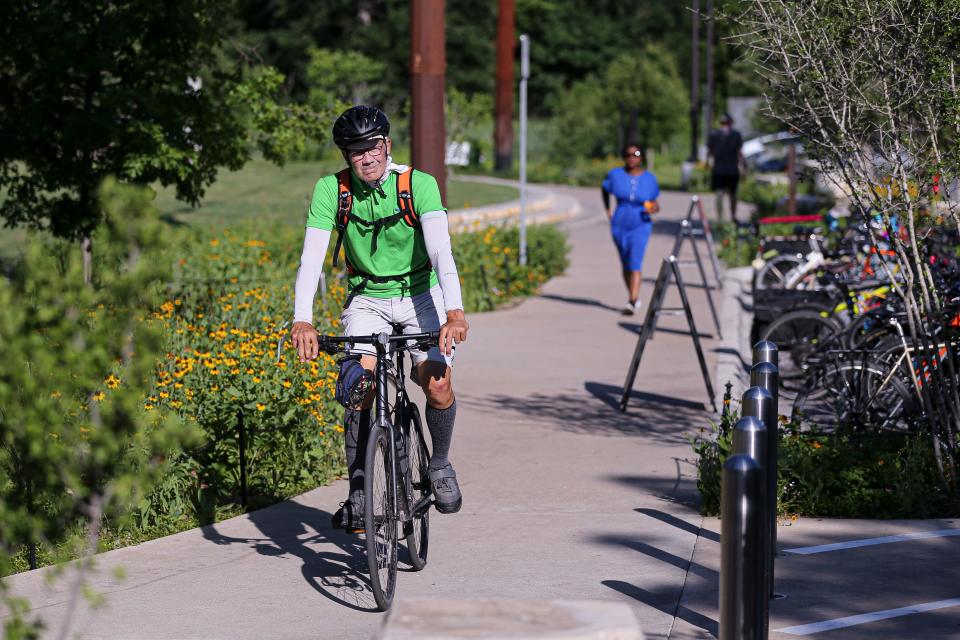
"I think it's important to recognize that we're a multimodal city and we serve all modes," Dierenfield said, explaining that modes includes pedestrians, cyclists, vehicles and public transit. "Going back to that speed and volume, you really do want to separate those users."
Intersection dangers
If you ask Kevin Fish, a bicycle injury attorney in Austin who also happens to be an avid cyclist, he'll tell you the dangers cyclists face in Austin aren't just from speeding cars, but also from vehicles turning at intersections.
Fish said he's seen firsthand how the increase in Austin traffic has affected cyclists sharing the highways. But no type of crash is more prevalent than cyclists getting hit at intersections, he said. Cyclists are injured at those sites in two main ways:
• When a vehicle is turning right but the driver doesn't notice that a bicyclist is turning alongside the vehicle or going straight, Fish said. That driver then hits the bicyclist while making the turn.
• When a vehicle is turning left across the opposite lane of traffic and crashes with a bicyclist the driver did not see pedaling across the road.
"They're just thinking about cars, cars, cars," Fish said. "They see there are no cars coming, so they turn, but then they don't realize there is also a bike lane there and a cyclist is in the bike lane."
Dierenfield, who agreed that intersections are a concern for cyclists, said the city is working to fix that issue, too. As with the Longhorn Dam project, the key is creating a barrier between vehicles, cyclists and pedestrians, she said.
An example of a road upgrade that accomplishes that goal can be seen at Payton Gin and Ohlen roads. That intersection now has concrete curbs to stop vehicles from going off the road, as well as paths for cyclists and pedestrians that veer a few feet from the main road to protect them at the intersection.
"Where we need to think more deeply and spend more money is at intersections," Dierenfield said. "We want to essentially elevate and remove the more vulnerable users out of the travel way and into separated and protected paths of travel."
Aylaian, who recently mourned Culver's death at his home with the abundance of family and friends he'd made on countless trips abroad, said she's also in favor of a separated bike trail for cyclists whenever possible.
"We were not only following all of the laws and regulations, but safe practices, or best practices, and were just plain being smart about the way that we were riding," Aylaian said about the moments leading up to the collision. "The only way that this could have been prevented, I believe, is if we would have been completely separated."
Remembering Keith Culver
Late last month in California, Aylaian mounted a bicycle in her home city of Palm Springs with her leg still bandaged as she and about 60 cyclists participated in a Ride of Silence, a national event to raise public awareness about bicycle safety. This particular ride was dedicated to her and Culver.
Aylaian said she's recommitted herself to sharing information about bicycle safety, specifically in her home state.
Culver was a lovable soul, Aylaian said. But, it wasn't until after his death that she truly grasped the reach of his generosity and the effect his life had from those across continents.
"I met Keith 17 years ago through a running club," she said. "He was wearing a T-shirt for having completed a marathon in Antarctica.
"He was nice, interesting, self-deprecating, funny and such a well-educated guy," she said.
Aylaian, echoing Dierenfield, believes that one life lost to a bicycle crash, especially a life as captivating and impactful as Culver's, is one too many.
Help with Keith Culver's case
Anyone with information about this case is asked to call the Highway Investigation Tip Line at 512-974-8111 or use the Crime Stoppers tip line at 512-472-8477. You can also submit tips by downloading APD’s mobile app, Austin PD, for free on iPhone and Android devices.
This article originally appeared on Austin American-Statesman: As Austin cyclists navigate traffic danger, city looks at safer roads

